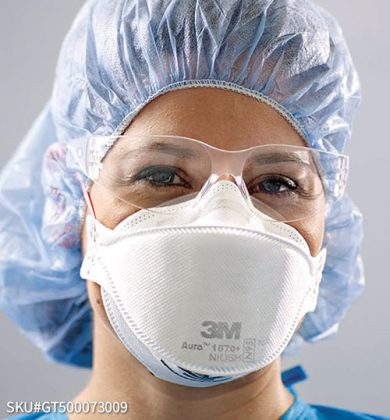
This tweet reminded me that it’s probably time for an update to my series of posts on COVID-19 masking:
Public health messaging about this has been terrible. The truth is that not all masks are created equally, and some masks are much better than others. I think public health authorities have been reluctant to say this out loud for a number of reasons, such as not wanting to cause a shortage of high-grade masks and not wanting to discourage people from wearing lower-quality masks if that’s all they have.
I should also acknowledge that the science of mask construction is not fully worked out. It’s difficult to study the effects of masking in the middle of a pandemic when there are so many different types of masks and so many things are changing at once. Scientists have evidence for a lot of effects that public health authorities aren’t comfortable turning into public guidelines.
That being said, I want to start with four important points about masking:
- No mask offers perfect protection. Even the best filtration materials will allow some virus particles to pass through. Even the best fitting masks will have a little leakage around the edges. No mask will make you completely safe.[1]That would take a full hazmat suit with air tanks, and even those can be damaged or worn incorrectly.
- All masks offer some protection. Even the poorest fitting cloth masks can remove some Covid virus particles from the air you breath. All other things being equal, masking never hurts.[2]But masks with large holes or that don’t cover the mouth and nose aren’t helping either.
- All masks do a better job protecting other people from you. No matter how well or how poorly a mask protects you from other people who have Covid, it probably does a better job of protecting other people from you if you have Covid. Wearing a mask doesn’t just protect you. It also protects others from you.
- Even relatively small effects at the personal level can add up across a population. A low-quality mask’s 10% protection may not do much for you, but if everybody wore one instead of going bare, a 10% reduction in the rate of spread throughout a large population for the duration of an infection wave can protect hundreds of thousands of people from Covid and reduce the stress on hospitals.
In other words, even wearing widely-mocked cloth masks such as traditional bandanas and neck gaiters can offer some level of protection to you, the people around you, and the population at large. But if you want to wear a mask that will offer you some serious protection, you can do a lot better.
The key to effectively protecting yourself with a mask is to use one that (a) has an effective filtering material, and (b) forces inhaled air to go through the filter instead of around it. That is, good masking requires the “two Fs,” filtration and fit.
As a general rule, simple cloth masks are going to fail on point (a). Typical woven cloth is just too porous to act as a very good filter. If you can hold it up to a light source and see tiny pinholes where the light shines through, it’s not much of a particulate filter. It might stop Covid in droplet form — as from a sneeze or wet cough — but it won’t do much to stop aerosolized Covid particles floating around a room. More complex mask designs made of several layers of cloth can improve on this a lot, depending on the materials used. I’ve seen studies that suggest a mix that includes things like electrostatic cloth and chiffon can be a great combination, and some cloth masks have a pouch to hold a replaceable filter over the nose and mouth.
Medical-style procedure masks — the rectangular ones we’re used to seeing on nurses and dental assistants — are typically made of non-woven materials that have great particulate filtration characteristics, but they tend to fail on point (b) because they don’t conform to the shape of the face very well. This makes for a poor seal, and air leaks around the edges and up along the gap where the nose meets the cheeks.
The general consensus is that these are better than most cloth masks, but that’s in part because procedure masks are standardized and therefore easy to test. It’s certainly possible that some well-designed cloth masks are actually better.
One solution is to combine the two technologies by wearing a cloth mask over a procedure mask. The anti-mask contingent likes to make fun of this (“OMG, the mask Nazis now want us to wear two masks!”) but the principle is sound: The procedure mask provides excellent filtration, and the cloth mask on top holds the procedure mask firmly against the face to provide a good seal. In studies, some of these appear to provide particulate filtration at least as good as a full N95 mask.
But there’s a much easier way to get N95-quality protection: Wear an N95 mask.
What makes an N95 mask important is that it’s more than just a mask, it’s a respirator. It is intentionally designed and manufactured to provide you with filtered air when you inhale. Obviously, any porous material you place over your nose and mouth will filter the air flowing through a bit — that’s why cloth masks are not totally useless — but respirators are specifically designed for the purpose and made from special materials that provide the necessary degree of particulate filtration. Moreover, approved N95 respirators meet standards of design and manufacture specified by the National Institute for Occupational Safety and Health (NIOSH).
Having said that, please don’t make the mistake of thinking that I’m telling you to wear some fancy medical gear. NIOSH evaluates products for occupational use in general, not for healthcare — that would be the FDA’s job. And before the pandemic, most N95 masks sold in the United States were not FDA approved for medical use. They were sold in hardware stores, and we called them “painter’s masks.”
When the COVID-19 pandemic hit, hospitals began running out of FDA-approved N95 masks, so the FDA issued an Emergency Use Authorization allowing all masks meeting the N95 standard to be used in healthcare for protection against Covid. And for a long time, most N95 masks in this country went to healthcare workers.
A lot has changed over the past two years. Respirator manufactures like 3M and Honeywell activated plans to step up respirator production and they began building out their factories to increase production even further, and a bunch of smaller companies joined in the production of N95 masks. Healthcare workers now have sufficient stockpiles, and N95 masks have become much easier for the rest of us to find (such as this one at Walmart or a whole bunch of them at Grainger). So there’s no excuse not to get an N95 mask if you want one.
Some people question the importance of masking now that we have a vaccine for the SARS-Cov-2 virus. That’s not an unreasonable point, but I have a few counter-arguments:
The vaccine was never 100% effective, so it is best evaluated the same as any other forms of protection — distancing, masking, etc. — and it’s important to consider the trade-off involved. E.g. if the vaccine is 95% effective, and we respond to vaccination by relaxing our other preventive measures so much that infection becomes 20 times more likely, then we will have achieved no net benefit in the fight to avoid catching Covid. Of course, the vaccine also reduces the severity of Covid cases, and we do get a great improvement to our quality of life in other ways — no masks, parties with friends, and so on — which should not be ignored.
However, if you do catch Covid, you might end up transmitting it to other people. That could be especially dangerous if they are unvaccinated, immunocompromised, or have other health problems that exacerbate a Covid infection. Those people thus bear some of the cost of your not masking, but receive none of the benefits. I’m not sure how much consideration you should give to the costs they might pay, but I’m pretty sure it isn’t zero.
Finally, vaccines stop proteins, but masks filter particles. The Pfizer-BioNTech and Moderna vaccines were both about 95% effective against symptomatic Covid caused by the the original SARS-CoV-2 strain. With the Delta variant, effectiveness is somewhere around 88%. The Omicron variant is too new to have good data, but some early studies suggest those vaccines are no more than 20% effective against symptomatic Covid caused by Omicron.[3]“Symptomatic COVID” is easy to detect quickly, but it tells us little about severity of illness. Lab experiments and some early field data strongly suggest that vaccination with a booster is very effective at preventing all known Covid variants from progressing beyond a bad cold. N95 masks, on the other hand, continue to filter out more than 95% of virus-sized particles, no matter what proteins they’re made of.
(That’s not to say that N95 masks will stop you from catching Covid from the variants. Omicron, for example, seems to multiply much more rapidly in the nose and throat than earlier variants, so even small numbers of virus particles will result in a Covid infection. However, masks are not subject to the escape effect of vaccines, and their relative protection factor remains the same. A mask that made it 10 times harder to catch original Covid will still make it 10 times harder to catch Omicron. It’s just that the baseline for Omicron makes it much easier to catch.)
There are obviously a few downsides to wearing N95 masks.
- They’re masks, and people have a variety of arguments for not wearing masks, ranging from the serious to the speculative to the seriously stupid.
- N95 masks are not reusable. You don’t need to dispose of them after a single use, but they can’t be washed and they do wear out.[4]There are reusable masks that meet the N95 standard, but they look like big rubbery gas masks because that’s what they are. And you still have to swap out the filters.
- N95 masks are more expensive than non-N95 disposable procedure masks.
For me, none of these are major issues. I don’t wear masks often enough for cost to be a major consideration, and they only bother me for a few minutes until I get used to them. Add to that the fact that I have a comorbidity or two and sometimes spend time with elderly and immunocompromised people, and an N95 mask just makes sense.
Having presented my argument for using N95 masks, let me talk about some choices. The key to getting the full benefit of an N95 mask is to find a model of mask that fits well and forms a good seal against your face. If you had to wear an N95 respirator for your job, you would be required to go through a periodic OSHA-specified fit testing procedure to find a mask that fits correctly. We can’t all do that, but you may need to try several different types of N95 mask until you find one that stays sealed against your face while you move your head and talk normally.
First, however, I should mention the one type of N95 mask you should not wear:
That little square block on the front is an exhalation valve that opens up when you breath out, making the mask less uncomfortable to use. That’s great when you’re using the mask to protect you from dust while sanding drywall patches, but it fails as a Covid-19 mask because it lets your breath escape without filtration. If you’ve caught Covid, this mask will do very little to prevent you from spreading it to everyone you meet. Thus, you want a mask without an exhalation valve.[5]Many places with strict masking rules will kick you out if you’re wearing one of these.
Now let’s look at some masks.
(Note: There are no affiliate links in this post. I don’t make any money if you follow the links and buy something.)
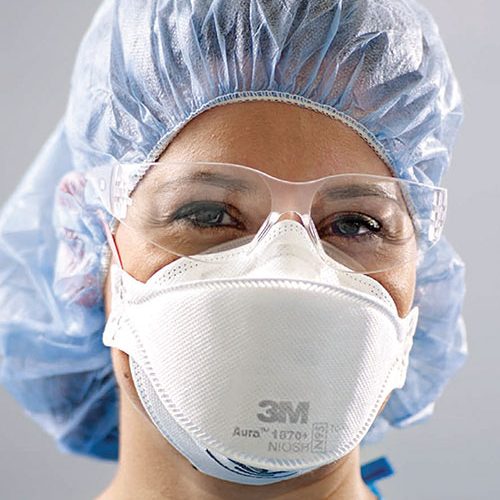
These top-of-the-line Aura masks are manufactured by industry giant 3M, and hospitals have been using them since long before the pandemic started. They have a soft, comfortable face seal, and the large surface area means they restrict your breathing relatively little despite being made of a material that filters particulates extremely well. They are also known as some of the easiest masks to fit correctly, and they are shipped folded flat, so you can slip a couple in your purse or jacket pockets.
Personally, I find them a little harder to breath through than some other masks, and putting them on correctly is time-consuming — lots of flaps and straps to position correctly. But if I’m going someplace where I know I’ll want a good mask for a long time, this is my current choice.
Note that the mask in this picture is the 3M model 1870+ of the Aura mask, which is FDA approved for use during surgery. You don’t need that. You can just buy a non-surgical version, such as the model 9205+, which you can find at places like Home Depot and True Value.
My personal favorite mask for everyday wear is this 3M model 9010 dust mask:
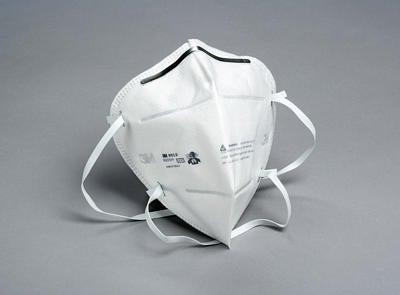
These are definitely a step down from the Aura, but they fold flat across the vertical center line and are easy to put on: Just hold it with one hand and pull the straps over your head with the other, then shape the nose piece. The resulting mask fits my face well and is comfortable enough for long-term wear.
My favorite thing about these masks is that the filter material is flexible enough to breath in and out as I inhale and exhale. That tells me that I’m producing pressure changes inside the mask, which means it’s sealed tight. If it’s not flexing as I breathe, I keep adjusting it until it does. I get them in 50-packs of individually wrapped masks from MSC Direct.

The Aegle N-95 respirator is another foldable mask that gets great reviews. It’s slightly less expensive than the 3M mask but seems very well made. I personally find them a little hard to fit correctly, but that probably says more about my face than about the mask. Otherwise they would probably be my go-to mask. Available by the box, case, or pallet load, directly from Aegle.
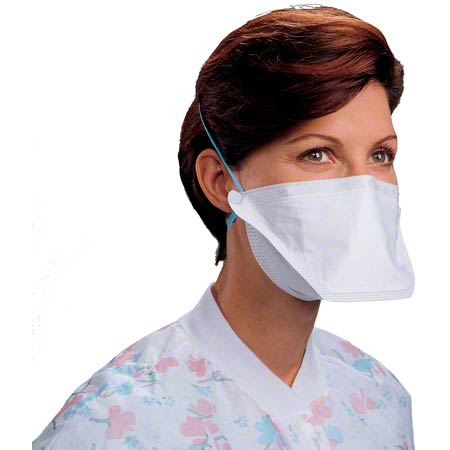
If cost is a big concern, these pouch-style respirators from Kimberly-Clark get good reviews and still cost less than $1 per mask in packs of 50. They used to be less than 50 cents per mask, but like many N95 masks, the price seems to have gone up with the Omicron wave. Not my favorite fit, but people with more normally-shaped heads than mine seem to like them.
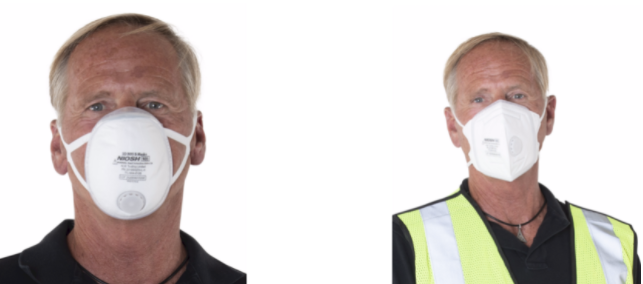
Another type of N95 mask I like, at least in theory, is the SoftSeal N95, available in cup or folding shape. These masks have silicone gaskets around the edges to provide a soft, flexible seal against the face. Although they don’t quite fit my face, other people swear by them, and I think flexible seals are definitely the right idea in long-term mask wear. The ones pictured here have the dreaded exhalation valves, but you can get them without exhalation valves directly from SoftSeal.
I should say something about KN-95 masks. These are usually described as the Chinese equivalent to the American N95 mask. That’s mostly true, but they differ from N95 masks in one fundamental way: They use ear loops instead of head straps, and thus they don’t hold the mask as tightly against the face. They also don’t technically meet the N95 standard, although for a while the FDA approved them for pandemic use. That approval has been revoked in healthcare settings — in part because of massive counterfeiting operations — but they are probably good enough for non-medical use.
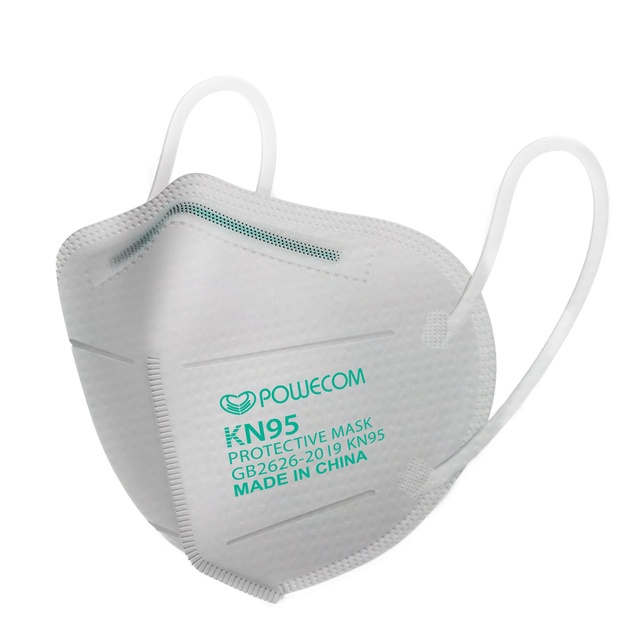
I wore these Powecom KN95 masks for months before I was able to find decent N95 masks online. Like the 3M 9010, they breath when I breath so I can tell when the seal is good, and they are easy to put on and take off. My wife swears by them. They seem less likely to be counterfeit than some other brands, and you can get them in packs of 10 at BonaFideMasks.
Finally, just for fun, I should probably mention the AirGami mask:
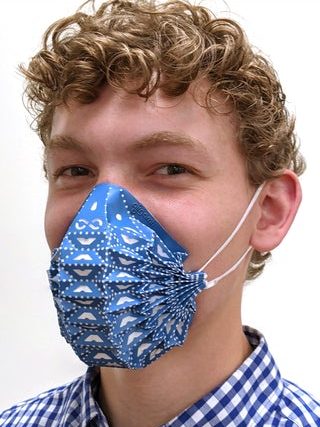
The Airgami mask uses oragami-like folding techniques to shape the mask, and they are available in a variety of colors, patterns, and sizes, with either head straps or ear loops. Everything about the Airgami website implies that they are almost, kinda, sorta N95 masks that will be NIOSH-approved any day now… but they aren’t actually on the NIOSH Certified Equipment List.
That doesn’t mean they’re a ripoff. I’ve seen several companies that have started making masks which meet all the N95 requirements but haven’t yet received the official stamp of approval from the government. In Airgami’s case, they even have a report from a third-party testing company showing that they meet the N95 standard (presumably for the headstrap version).
Furthermore, I’ve seen twitter reviews by doctors who swear that these masks are very comfortable for long-term wear. They sound like a great modern take on the N95 mask, and even without NIOSH certification, the reviews make me want to try them out.
Except for one thing: They cost over $20 per mask! They’re supposed to be reusable, and they can be disinfected with steam or in an oven, but damn.
Finally, I should include a few notes on how to use N95 masks.
The melt-blown particulate filter material does a great job of cleaning the air, but only if all the air actually passes through the filter material. That only happens if the mask is fitted snugly to your face and has no leaks anywhere around the entire edge of the mask. In an occupational setting you would get help from a trained expert. For personal use, you will just have to make do.
(It’s not rocket science, and the worst that can happen is that it will function no better than a procedure mask, so don’t sweat it too much.)
The most important thing is to follow the manufacturer’s instructions for donning the mask. If instructions don’t come with the masks you bought, check the manufacturer’s website.
In the event you can’t find the instructions, the donning procedure is generally something like this:
- Sanitize your hands.
- Take the mask out of its container and inspect it for damage.
- Open the mask up and find the upper and lower straps.
- Holding the mask in front of you, pull the straps over your head.
- The lower strap should go below your ears and around your neck just below the base of your skull.
- The upper strap should go above your ears and around the back of your head.
- Adjust the mask to fit:
- Using both hands, one on each side, shape the metal piece over the top of your nose to hold the mask firmly against your nose and cheeks. (Every manufacturer warns against trying to use just one hand.)
- Adjust the positions of the straps to pull the mask into a snug fit against your face at all points around the edge.
- Untwist the straps so they lie flat against your head.
- Conduct a seal test by covering the front of the mask with your hands and exhaling. Check for air escaping around the edges of the mask.
- If the mask doesn’t fit, repeat these adjustments until you are satisfied.
One more note, just for the guys: If you want to use an N95 mask, it’s probably best to shave. Even a slight beard can impair filtering efficiency by keeping the edges of the mask from making smooth contact with the skin, and anything over 1/8 inch will likely drop the mask effectiveness below its specifications.
That’s it. I remind you once again that I am not a PPE expert, merely a PPE enthusiast, and if you see any dangerous mistakes, be sure to let me know.
Good luck out there.
Footnotes
| ↑1 | That would take a full hazmat suit with air tanks, and even those can be damaged or worn incorrectly. |
|---|---|
| ↑2 | But masks with large holes or that don’t cover the mouth and nose aren’t helping either. |
| ↑3 | “Symptomatic COVID” is easy to detect quickly, but it tells us little about severity of illness. Lab experiments and some early field data strongly suggest that vaccination with a booster is very effective at preventing all known Covid variants from progressing beyond a bad cold. |
| ↑4 | There are reusable masks that meet the N95 standard, but they look like big rubbery gas masks because that’s what they are. And you still have to swap out the filters. |
| ↑5 | Many places with strict masking rules will kick you out if you’re wearing one of these. |

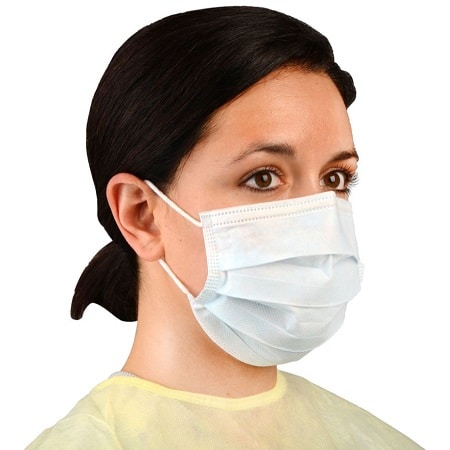
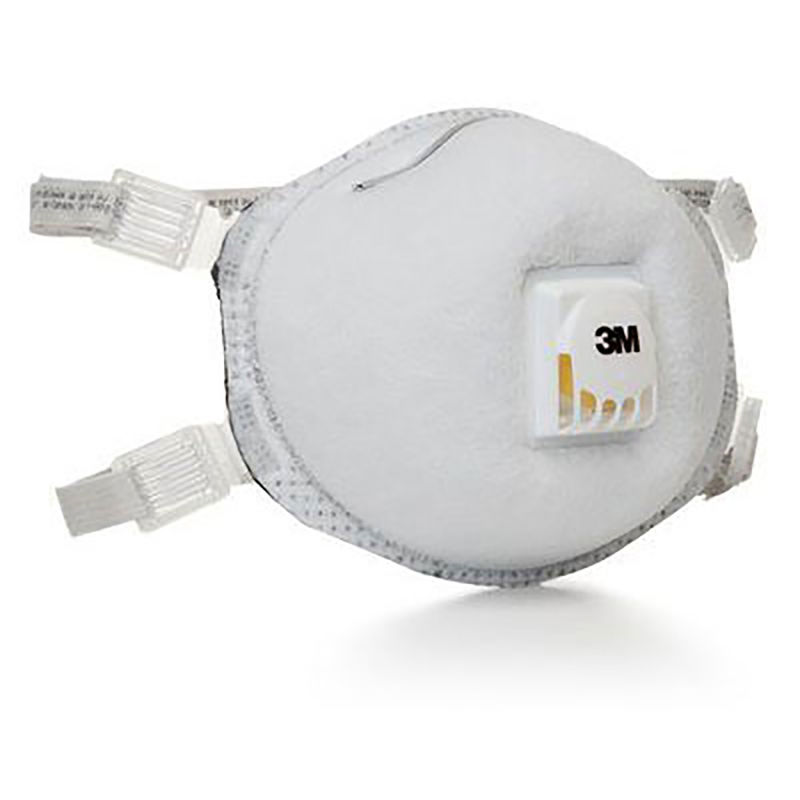
Nice article. My mask of choice has been the Airgami mask since late 2021 and am a total convert. Prior to that I wore the 3M Aura and tried a couple of the crappy KN95s that don’t fit my nose.
I know the Airgami isn’t N95 certified, but the specs on this mask are super impressive and after wearing it, I believe it. I’m super sensitive to chemical perfumes they use in detergents and now, wearing Airgami, I can walk down the detergent aisle at Costco and take a deep breath without any gagging.
I love the fact that the Airgami mask seals as well as it does and doesn’t fall off my nose when I open my mouth to talk. People can actually hear and understand me. This is exactly what they say on their website and it’s true.
Personally, I detest nose wires, which is why I have been wearing an elastomeric in spite of the fact that it is heavy and bulky. Nose wires really wreck the skin around my nose bridge and kink after a couple of uses, rendering my cheap masks unusable.
Whereas with the Airgami, I put it on and it just stays in place on my face. Compared to the elastomeric, it’s incredibly light weight. And it doesn’t fog my glasses! No B.S. No nose wire to adjust. Not like everyone else I see constantly messing with their masks to pull them back on their noses and adjust the nose wire.
Best of all, the Airgami mask is super breathable because it has so much surface area. I almost thought the mask was leaking when I first wore it because I could get so much air.
I don’t usually write reviews like this, but this mask is a game changer IMHO. Those Airgami folks should get a medal or something. From the looks of the prizes they won, they probably already have.
Thanks for the info on the Airgami, Charles. Although I find it curious that your optional website link is to the Airgami website and that you appear to have posted from the Denver area, where Airgami is located, you nevertheless make some good points about the problems with existing mask designs.
Healthcare infection control generally requires changing PPE between patients, so masks were only worn for the duration of patient encounters, then discarded. Consequently, N95 medical-style masks were were never intended for long-term wear, and it wouldn’t have made economic sense to make them out of expensive materials. They were designed to be cheap and disposable.
A mask intended for long-term wear has different economics, and it would be okay if they cost more because you wouldn’t be replacing them several times per day. If wearing masks is going to be a thing for a while longer, then we need better designs for long-term masks that are comfortable and reusable. Airgami, and other advance mask designs, sound like a possible solution.